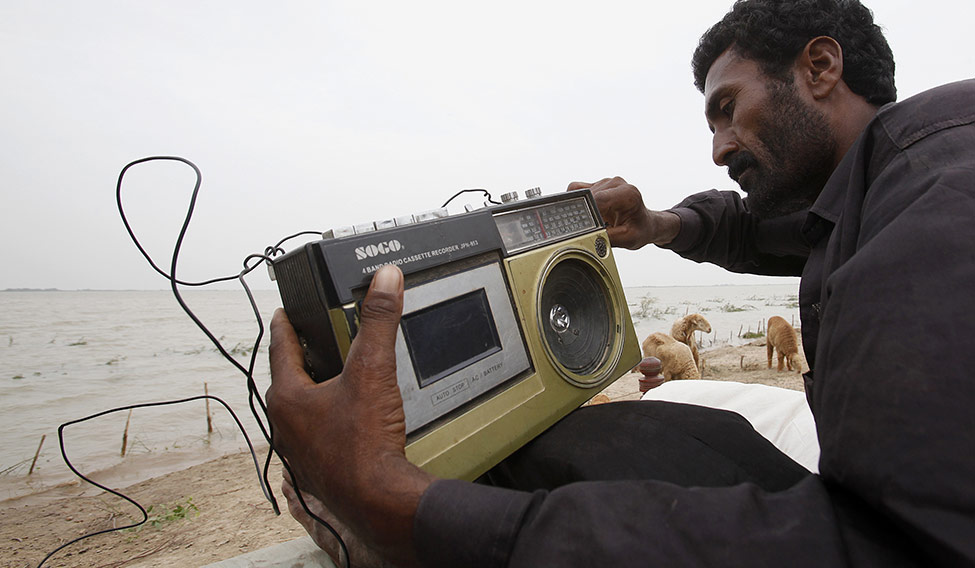A red building, near the Parliament House in Delhi, has been at the heart of India’s longest-running covert operation. In tiny, blue-walled rooms with rattling air conditioners sit men and women of All India Radio’s external services division, faithfully broadcasting India’s message across enemy lines.
The members of the division speak 27 different languages, including Swahili, Tibetan, Russian, French, Burmese and Sinhala, and remain not only relevant, but also important in the age of Twitter.
For instance, on September 16, AIR launched a website and app for its Balochi service. As India steps up its diplomatic war to isolate Pakistan, this radio service will reach the people of Pakistan. Prime Minister Narendra Modi made a reference to this in his speech in Kerala on September 24.
“We have got a lot of emails,” says Maria Rakhshani, translator and announcer. “And we are trying to read them.” She came from Afghanistan in 2009 and has been working with the division since. Her daughter, Seema, also works here.
Since 1974, the service has continued broadcasting India’s version of the story beyond the border. The message may not have been inflammatory, but it was certainly political, and the target was clear—Pakistan. Beamed over shortwave, the service, which has commentary, news and songs, has always had listenership.
Dr Ghulam Mohammad Lal Zad and his wife, Abda Baluch, were the anchors in the mid-1970s, when the service was most popular. “We used to get at least 250 letters a week,” says Babu Baluch, who was part of the service till recently. Over the years, the programme lost its steam with the Lal Zads migrating to Canada. But, Prime Minister Modi returned focus to the service in his speech on August 15.
After inheriting it from the British, India had realised the power of the waves and used them to spread the “voice of democracy”, as one official put it.
“It still does come in use during a crisis,” said an official. Shortwave has lost out to the more powerful FM. But during the 2015 Nepal earthquake, it was the Nepali service of AIR’s external division that came to the rescue. It became the default SOS voice and produced hourly bulletins with vital information and phone numbers.
The service has also been used as a diplomatic tool. It is constantly monitored and is used to counter propaganda.






